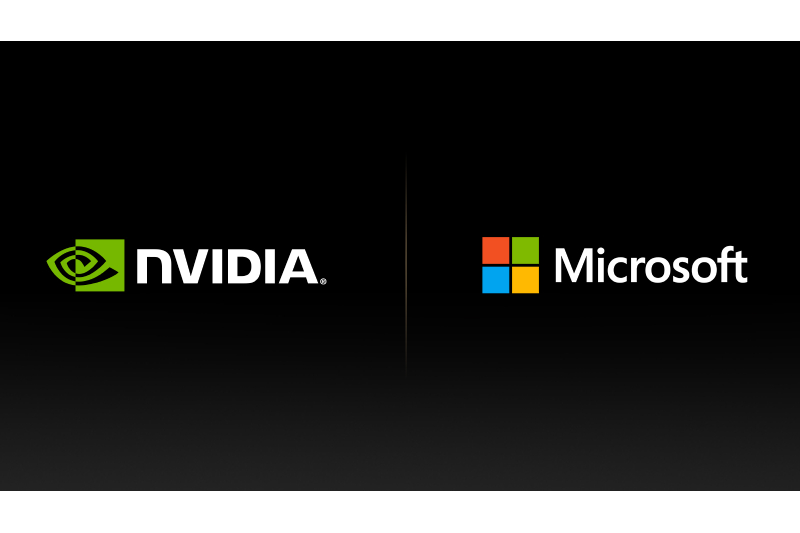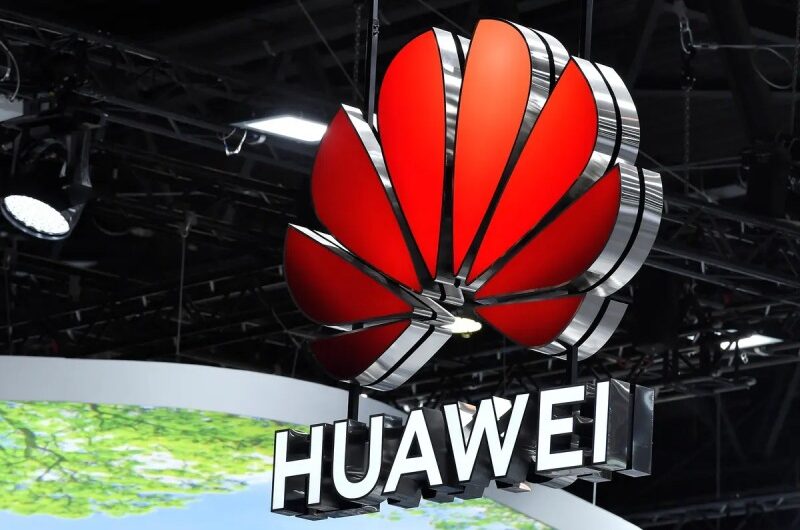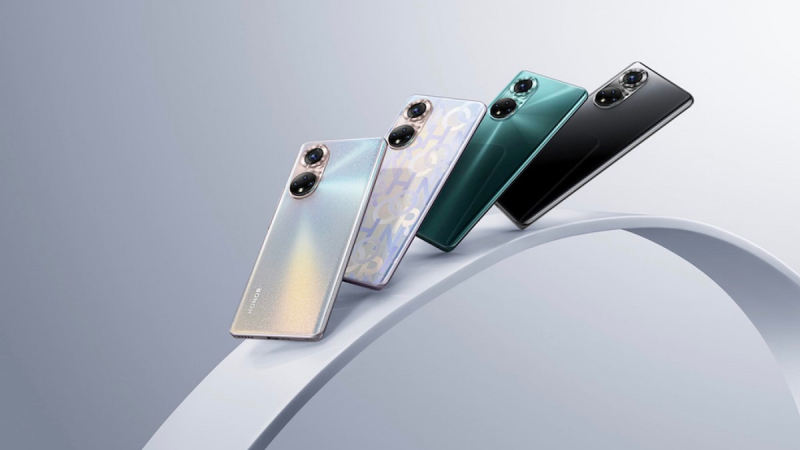The latest NVIDIA generative AI and OmniverseTM technologies are being leveraged by Microsoft Corp. and NVIDIA to enhance their longstanding partnership with Microsoft Azure, Azure AI services, Microsoft Fabric, and Microsoft 365. These integrations were unveiled on Monday at GTC.
“Together with NVIDIA, we are making the promise of AI real, helping drive new benefits and productivity gains for people and organizations everywhere,” said Satya Nadella, chairman and CEO, Microsoft. “From bringing the GB200 Grace Blackwell processor to Azure, to new integrations between DGX Cloud and Microsoft Fabric, the announcements we are making today will ensure customers have the most comprehensive platforms and tools across every layer of the Copilot stack, from silicon to software, to build their own breakthrough AI capability.”
“AI is transforming our daily lives — opening up a world of new opportunities,” said Jensen Huang, founder and CEO of NVIDIA. “Through our collaboration with Microsoft, we’re building a future that unlocks the promise of AI for customers, helping them deliver innovative solutions to the world.”
Infrastructure for AI advancement
Microsoft will be among the first companies to offer cutting-edge trillion-parameter foundation models for speech recognition, computer vision, natural language processing, and more on Azure, as well as to harness the power of NVIDIA’s Grace Blackwell GB200 and Quantum-X800 InfiniBand networking.
Additionally, based on the NVIDIA H100 NVL platform, Microsoft is introducing the general availability of its Azure NC H100 v5 VM virtual machine (VM). The NC series of virtual machines is intended for midrange training and inferencing. It supports NVIDIA Multi-Instance GPU (MIG) technology, which lets users divide a single GPU into up to seven instances, giving them flexibility and scalability for a variety of AI workloads. Customers can choose from two classes of virtual machines (VMs) that range from one to two NVIDIA H100 94GB PCIe Tensor Core GPUs.
Innovations in Healthcare and Life Sciences
Microsoft and NVIDIA are extending their partnership to leverage cloud, AI, and supercomputing technologies to revolutionize healthcare and life sciences. Healthcare providers, pharmaceutical and biotechnology companies, and medical device developers will soon be able to innovate more efficiently and quickly in clinical research and care delivery by utilizing Microsoft Azure in conjunction with NVIDIA DGXTM Cloud and the NVIDIA ClaraTM suite of microservices.
Cloud computing and artificial intelligence (AI) are already being used by industry leaders like Sanofi and the Broad Institute of MIT and Harvard, industry ISVs like Flywheel and SOPHiA GENETICS, academic medical centers like the University of Wisconsin School of Medicine and Public Health, and health systems like Mass General Brigham to drive revolutionary changes in healthcare and to improve patient care.
Digitalization of Industry
Later this year, NVIDIA Omniverse Cloud APIs will be initially made accessible on Microsoft Azure, allowing developers to enhance data interoperability, collaborate on projects, and add physics-based visualization to already-existing software applications. Microsoft is showcasing a sneak peek of what Omniverse Cloud APIs on Microsoft Azure can do at NVIDIA GTC. Factory operators can examine real-time factory data overlaid on a 3D digital twin of their facility to obtain fresh insights that help expedite production by using an interactive 3D viewer in Microsoft Power BI.
Microsoft Copilot with NVIDIA Triton Inference Server together
Microsoft Copilot for Microsoft 365 uses NVIDIA GPUs and NVIDIA Triton Inference ServerTM to offer AI inference predictions. Copilot for Microsoft 365 blends the strength of big language models with unique enterprise data to give real-time contextualized information, empowering users to improve their creativity, productivity, and abilities. It will soon be accessible as a dedicated physical keyboard key on Windows 11 PCs.
AI Deployment and Training
Azure AI will soon support NVIDIA NIMTM inference microservices, which will accelerate AI installations. NIM offers cloud-native microservices for efficient inference on over two dozen common foundation models, including NVIDIA-built models that customers can experience at ai.nvidia.com. It is a component of the NVIDIA AI Enterprise software platform, which is also accessible on the Azure Marketplace. To help developers accelerate time to market for performance-optimized production AI applications, the microservices offer prebuilt, run-anywhere containers powered by NVIDIA AI Enterprise inference tools, such as TensorRTTM, Triton Inference Server, and TensorRT-LLM.
Concerning NVIDIA
NVIDIA (NASDAQ: NVDA) has led the way in accelerated computing since its establishment in 1993. The company’s 1999 creation of the GPU launched the current era of artificial intelligence, revolutionized computer graphics, propelled the PC gaming industry, and is driving industrial digitalization in a variety of industries. With its data center-scale offerings, NVIDIA is now a full-stack computing infrastructure firm that is revolutionizing the industry.
Concerning Microsoft
Digital transformation is made possible by Microsoft (Nasdaq “MSFT” @microsoft), ready for the era of the intelligent edge and cloud. Its goal is to enable every individual and every organization on the earth to reach their full potential.
Forward-Looking Statements from NVIDIA
This press release contains certain forward-looking statements, such as those about the following: the advantages, effects, features, performance, and accessibility of NVIDIA’s products and technologies, such as NVIDIA Grace Blackwell Superchip, NVIDIA DGX Cloud, NVIDIA Omniverse Cloud APIs, NVIDIA AI and Accelerated Computing Platforms, and NVIDIA Generative AI Microservices; the advantages and consequences of NVIDIA’s partnership with Microsoft, as well as the features and accessibility of its services and offerings;and creating a future where NVIDIA’s ongoing partnership with will help customers realize the potential of AI and bring revolutionary solutions to the world. Microsoft are projections that are vulnerable to risks and uncertainties that could lead to outcomes that differ significantly from initial projections. Global economic conditions, NVIDIA’s reliance on third parties to manufacture, assemble, package, and test its products, the impact of technological advancement and competition, the development of new products and technologies or enhancements to NVIDIA’s existing products and technologies, market acceptance of NVIDIA’s or NVIDIA partners’ products, design, manufacturing, or software defects, changes in consumer preferences or demands, modifications to industry standards and interfaces, and unexpected loss of NVIDIA’s performance are all significant factors that could cause actual results to differ materially from expected resultsproducts or technologies when incorporated into systems; in addition, other variables periodically mentioned in the latest reports NVIDIA submits to the Securities and Exchange Commission, or SEC, such as its Form 10-K annual report and Form 10-Q quarterly reports, are taken into consideration. On the firm website and free of charge from NVIDIA are copies of reports that have been filed with the SEC. NVIDIA disclaims all responsibility to update any forward-looking statements to reflect subsequent events or circumstances. any statements are made as of the date hereof and are not assurances of future performance.
Many of the features and products mentioned below are still in different phases of development and will be made accessible as and when they become available. The aforementioned assertions are not meant to be, and should not be construed as, an assurance, a commitment, or a legal duty. NVIDIA retains all control over the development, release schedule, and nature of any features or functions that are specified for our products. If any of the products, features, or functions listed below are not delivered or are delivered later than expected, NVIDIA will not be held liable.
Topics #generative AI #Microsoft and NVIDIA










